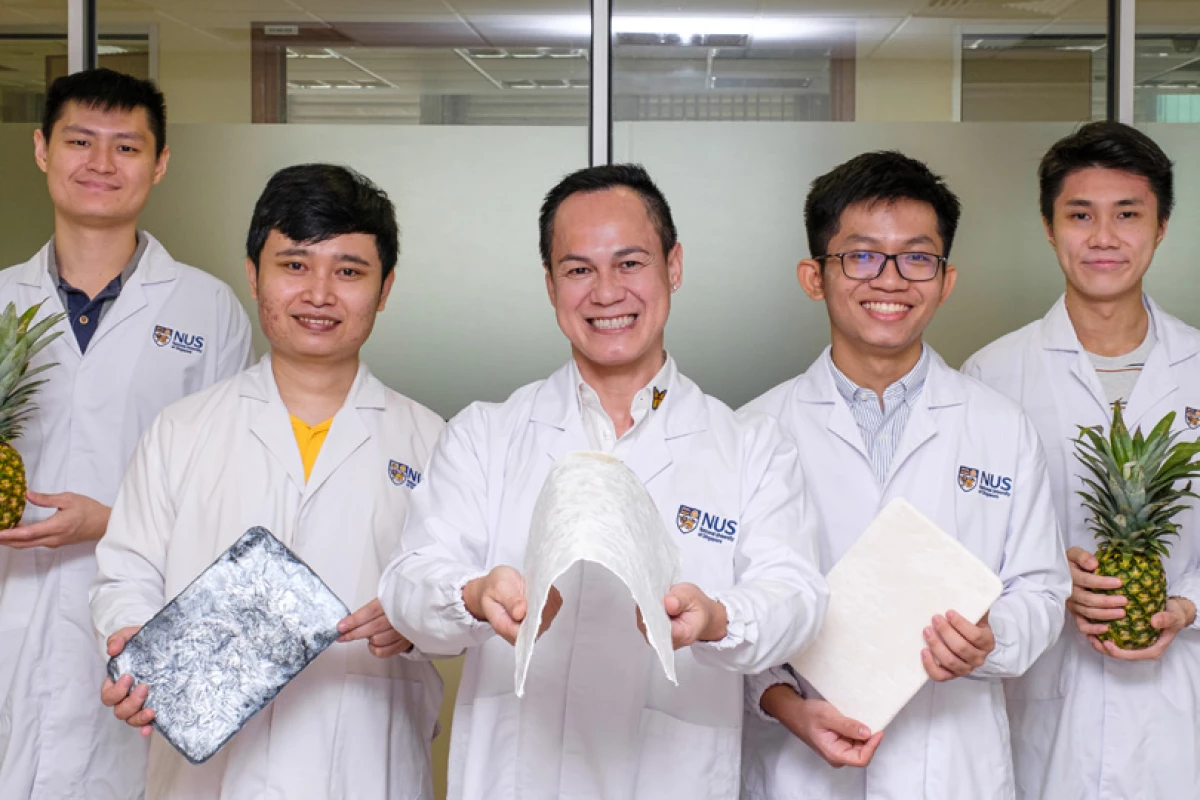Technologies that extend the lifespan of perishable foods could help us avoid huge amounts of waste, and scientists in Singapore have unearthed a promising new possibility in the form of chemically treated pineapple leaves. The team’s new upcycling method converts this typically discarded biomass into an aerogel that preserves other fruits and vegetables, and could also be used to clean toxic chemicals from wastewater as an added bonus.
These new biodegradable aerogels are the handiwork of mechanical engineers at the National University of Singapore, who have spent years looking to craft these eco-friendly materials from waste products including coffee grounds and sugarcane residue. But the researchers are particularly excited about the material produced with pineapple leaves as the starting point, which they say could serve a number of purposes.
“These eco-aerogels made from pineapple leaf fibers are very versatile,” says leader of the research team Professor Duong Hai-Min. “They are effective as oil absorbents and for heat and sound insulation. We have also demonstrated their potential applications in food preservation and wastewater treatment. This is a big step towards sustainable agriculture and waste management, and provides an additional source of income for farmers.”
The process starts with the shredding and blending of the pineapple leaf fibers in water, while stirring in small amounts of non-toxic chemicals. This mixture is then aged, frozen and freeze-dried to create an aerogel, which is then treated with activated carbon powder. This key last step enables the aerogel to absorb ethylene gas, the hormone that drives the ripening process in fruits and vegetables, to great effect.
“Vast quantities of fresh agricultural produce are discarded due to inadequate post-harvest storage and processing facilities, as well as inefficient or disrupted transportation systems,” says study author Professor Phan-Thien. “Therefore, cutting down spoilage can go a long way in reducing waste. In our lab experiments, eco-aerogels modified with activated carbon can delay the rotting process by at least 14 days. The modified eco-aerogel can absorb six times more ethylene than commercial potassium permanganate ethylene absorbents. This is also a safer method compared to the conventional use of strong oxidizing agents, and more efficient than non-toxic chemical sprays, for food preservation.”
The researchers have produced other aerogels using other raw materials through variations of this technique, but say that those made from pineapple leaves boast stronger mechanical properties. They can also be coated with the chemical diethylenetriamine which turns them into filters for wastewater, enabling them to remove nickel ions with four times the efficiency of conventional solutions, claim the researchers.
“Due to its high porosity, eco-aerogels are highly efficient in removing metal ions, even in dilute solutions where the amount of metal ions is low,” says Duong. “The treatment process is simple, cheaper and does not generate secondary waste. Eco-aerogels can also easily desorb the metal ions and be reused several times, further reducing costs.”
The team has filed a patent for the new aerogel, and notes that the material could offer a cheap solution for food preservation and waste water treatment at a cost of around US$20 to $35 per square meter (10 sq ft). The video below provides an overview of the research.
Source: National University of Singapore




